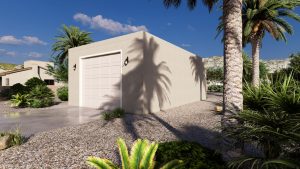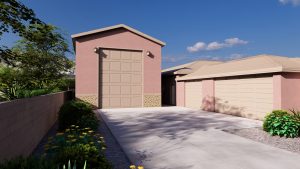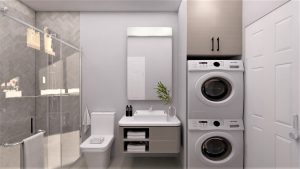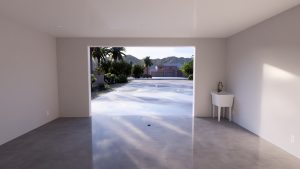
A Desert-Resilient Casita: Materials and Techniques for Extreme Arizona Climates
- By Jeff Felt
- October 30, 2024

Building a casita in Arizona’s desert climate requires strategic design and durable materials to withstand the region’s intense heat, monsoons, and temperature fluctuations. A desert-resilient casita can offer comfort, energy efficiency, and longevity, making it a worthwhile addition to any Arizona property. Here’s what to consider in designing a casita that can stand up to the elements.
1. Energy-Efficient Insulation
In the desert, insulation plays a critical role in maintaining comfortable indoor temperatures. Look for materials like spray foam insulation or rigid foam panels, both of which provide high R-values (thermal resistance). These materials create an effective barrier against the desert’s extreme heat, keeping interiors cooler in summer and reducing cooling costs.
2. Durable Exterior Materials
For desert climates, casita exteriors should be durable, heat-resistant, and low-maintenance. Stucco is a popular choice in Arizona due to its natural resistance to heat and ability to withstand strong winds and rain. Fiber cement siding is another excellent option, offering fire resistance, pest resistance, and color longevity even under prolonged sun exposure.
3. Heat-Reflective Roofing
The right roofing material is essential to reduce heat absorption and extend the lifespan of the casita’s roof. Metal roofing with reflective coatings is an excellent option for desert environments, as it reflects sunlight and minimizes heat absorption. For those looking for a more traditional look, clay or concrete tiles are naturally heat-resistant and provide long-term durability under the sun’s intense rays.
4. Proper Ventilation Systems
Adequate ventilation ensures that hot air does not build up inside the casita, which can be especially uncomfortable in the summer. Options like ridge vents, gable vents, or even solar-powered attic fans can help circulate air, reduce indoor temperatures, and prevent excess moisture buildup during Arizona’s monsoon season. Well-ventilated spaces stay cooler and prevent issues like mold or mildew.
5. Strategic Window Placement and Glazing
Maximizing natural light while minimizing heat gain requires thoughtful window placement. Installing windows on north-facing walls reduces direct sun exposure, keeping interiors cooler. Double-glazed or low-emissivity (low-e) glass can help control heat transfer, offering insulation without sacrificing natural light. Pairing these windows with UV-blocking shades or exterior shading features can further protect against excessive heat.
6. Thermal Mass Flooring Options
Using high thermal mass flooring, like concrete or natural stone, helps regulate indoor temperatures. These materials absorb heat during the day and release it as temperatures drop at night, reducing the strain on cooling systems and adding an eco-friendly layer to the casita’s design.
7. Water-Efficient Landscaping
Desert landscaping with drought-resistant plants, gravel, and rocks can help manage water usage around your casita. Plants like succulents, sage, and agave require minimal water and offer aesthetic appeal without the maintenance of traditional grass. Hardscaping techniques, such as rainwater harvesting or dry river beds, can control drainage during monsoon season and keep the area around the casita low-maintenance and sustainable.
8. Solar Integration for Power Efficiency
Installing solar panels is a smart choice in Arizona’s sunny climate, providing renewable energy and reducing reliance on traditional power sources. Rooftop or ground-mounted solar panels can power the casita’s lighting, cooling, and appliances, offering long-term energy savings. Solar systems paired with a battery backup ensure consistent power even during outages, making the casita more self-sustaining.
9. Fire-Resistant Materials
In the dry Arizona climate, using fire-resistant materials is crucial for safety. Metal roofing, fiber cement siding, and stucco walls reduce fire risk, while fire-rated doors and windows provide additional protection. Landscaping with fire-resistant plants and maintaining a clear perimeter around the casita can further safeguard the property from potential fire hazards.
Final Thoughts
Designing a desert-resilient casita requires careful attention to materials, energy efficiency, and climate control strategies. Arizona Casita Builders uses these principles to help homeowners construct casitas that are beautiful, sustainable, and capable of withstanding Arizona’s unique climate challenges. Whether for family use, rental income, or as a personal retreat, a desert-resilient casita offers lasting comfort and value in Arizona’s arid landscape.
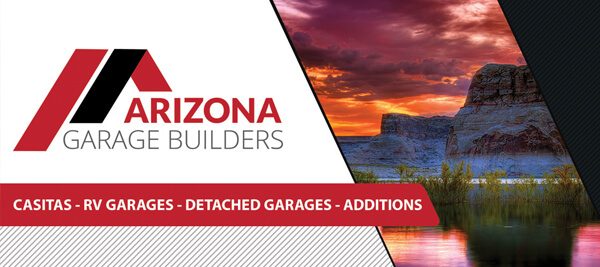

Get A Quote For Your New Garage
We prepare your estimate for your new construction project with absolutely no obligation or cost. We prepare all of the calculations and 3d renderings for your project so you know what Arizona Garage Builders can do for you. We will prepare your proposal online so you can see it from any device..
